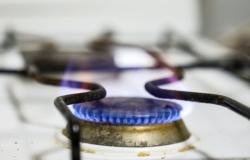The final commission opinion of the Bases Law that came out of the Senate maintains the benefit for the regions that in 2021 joined the “cold zone” regime, by which nearly half of the residential users of natural gas in Argentina receive a discount of between 30% and 50% on your final invoices.
That axis had been excluded in the half-sanction of the Chamber of Deputies and it was the intention of the national government to eliminate it completely.
Although the cold zone subsidies do not arise from a contribution from the Treasury, but are financed with a surcharge on invoices throughout the country, the intention of Javier Milei’s management was to remove that extra benefit.
The ruling that came out of the Senate reincorporates the expansion that had extended the benefit to more than 4 million users. It is financed with a percentage of the rate paid by all homes, businesses and industries.
The ruling party’s bill that had achieved half-sanction in the Chamber of Deputies authorized the Executive Branch to modify, transform, dissolve or liquidate the trust funds. The rule contemplated the exclusion of the Trust Fund for Residential Gas Consumption Subsidies created by Law 25,567, although it did not mention the last modification.
The opinion that came out of the Senate included the modification of Law 27,637 promoted in 2021 by Deputy Máximo Kirchner that extended the benefit to more areas of the country than originally planned.
This detail had generated concern among interior legislators, who sought to ensure the maintenance of these subsidies.
The regime provided for by Law 25,565 on Cold Zones originally provided that since 2002 some 800,000 users in Patagonia, Puna and Malargüe (Mendoza) will have a discount on their rates of 50% on what they pay in the price of gas.
Two years ago the benefit was expanded to other areas of the country with cold or temperate-cold climates and reached 4.3 million homes, out of a total of 9 million in the country. Localities from Mendoza, San Juan, San Luis, Salta, Córdoba, La Rioja, Salta, Tucumán and Catamarca joined, as well as fifty municipalities in the province of Buenos Aires.
However, this subsidy is not funded by contributions from the National Treasury but rather arises from a 5.44% surcharge on the price of gas (PIST) – one of the four items that make up the bill in addition to transportation, distribution and taxes. paid by all users (residential, commercial and industrial) in the country. Contributions go to the Trust Fund for Residential Gas Consumption Subsidies.
The Government transfers to the distributors the difference between what the beneficiary households pay and the “real cost” of the invoice to the distributors with funds from that trust. Last year, this fund had income of $116,877 million and expenses of $77,663 million, that is, a positive result of $39,213 million. This was one of the trust funds that the Government had in its sights for its elimination.
In fact, in mid-May gas distributors and sub-distributors throughout the country had targeted the Minister of Economy, Luis Caputo, for stepping on the refunds of “cold zone” rates. The debt, which was later canceled, was for about $4.3 billion.






